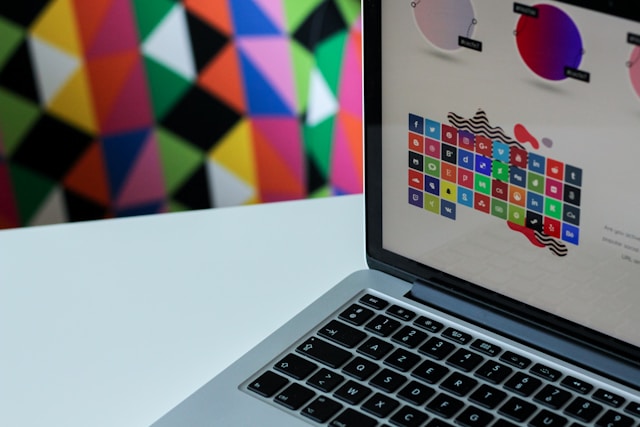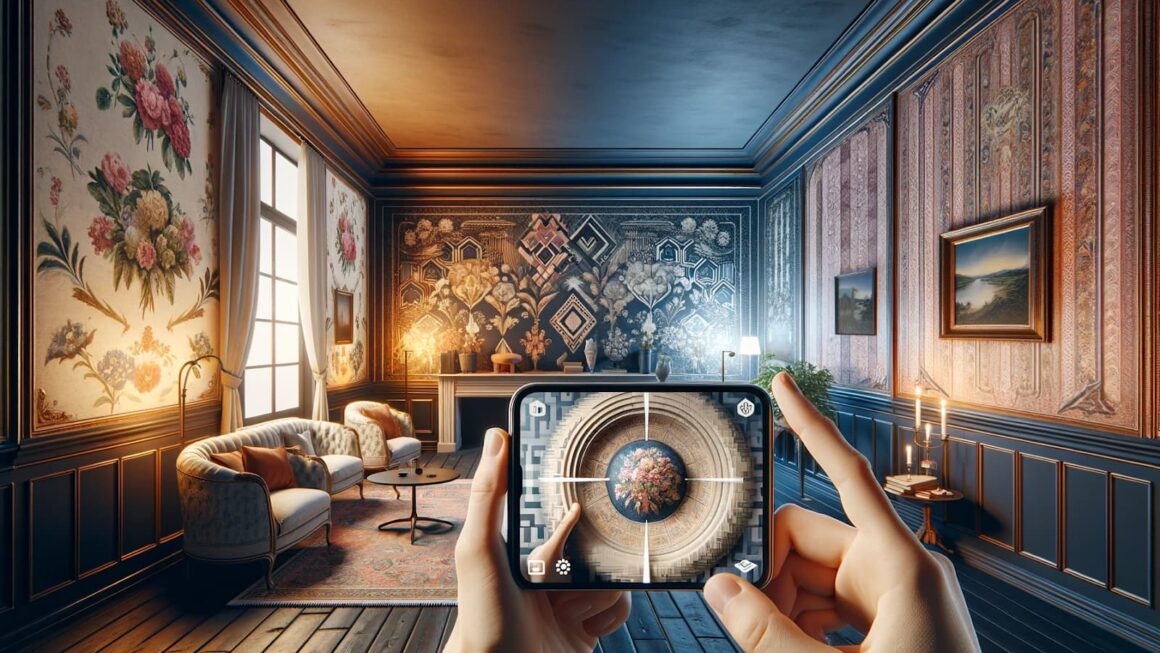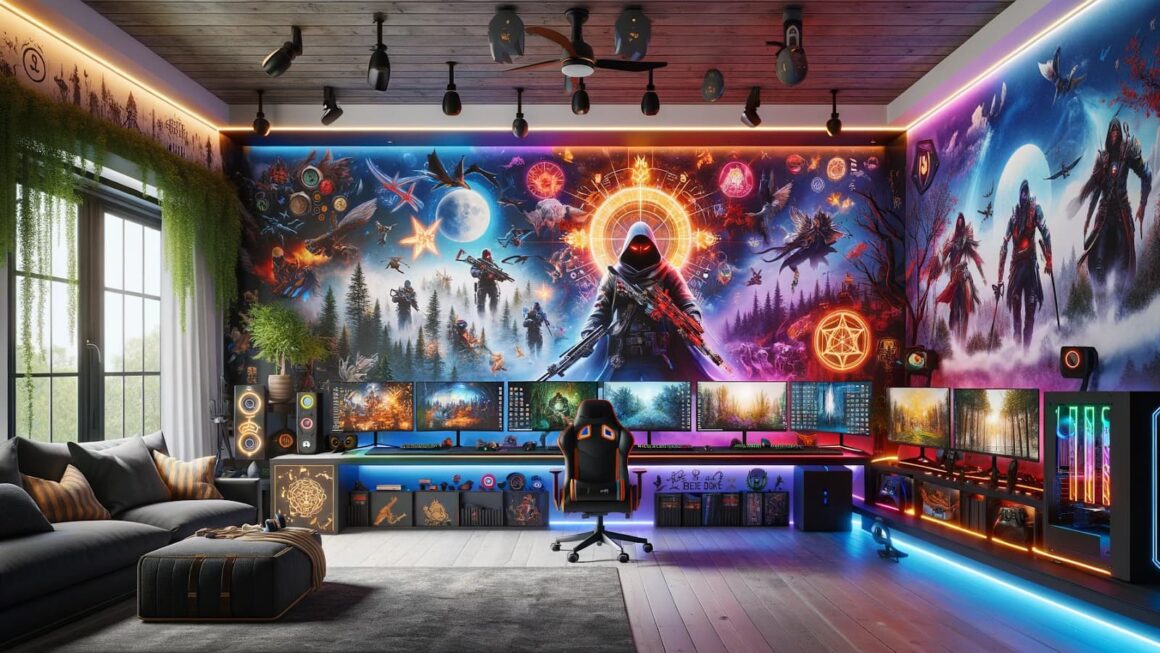Wallpaper – this is the mood with which you will be greeted by your home. In this article we will consider the main aspects in the choice of wallpaper. After all, they play one of the most important roles in creating a unique image of the interior.
Composition of wallpaper
Wallpaper consists of a base and a coating. The base is a layer in contact with the wall and impregnated with glue. It can be paper, fabric, and man-made. The coating is what is applied to the substrate. Here, manufacturers are not used to limit themselves, are used:
- paper,
- fibers of plant,
- animal, mineral and artificial origin,
- metal,
- polymers,
- varnishes,
- paints and their combinations.
Paper wallpaper
A significant advantage is the affordable price, change them at least every year without much damage to the budget. Professional terminology – wind it on your ear: thin, single-layer paper wallpaper is called simplex, consisting of two compacted layers of paper – duplex.
Simplex is the simplest option. They are environmentally safe, air permeable, have little sound-absorbing and heat-retaining properties. True, they are fragile, easy to burn out (not resistant to ultraviolet rays). Also, this wallpaper is very capricious – the walls must be perfectly aligned. Duplex wallpaper. This wallpaper is less susceptible to deformation when pasting than simplex. They have a higher light and moisture resistance. They can also be used in the kitchen.
Fliselin wallpaper
Fleece wallpaper does not need a paper backing, is homogeneous on the front and back side and consists, according to the manufacturers, of fibers of plant origin. After gluing, they can be painted with water-emulsion, latex or acrylic paint (can withstand up to five coats).
These wallpapers, according to the manufacturers, have a superhardness, but the special strength, resistance to abrasion and moisture they acquire only after gluing and painting. A special advantage of this wallpaper is that there is no need to paste it with glue, it is applied only on the wall. Many Western manufacturers predict that fleece will soon replace paper in production. Even now it is used as the basis for a variety of vinyl wallpaper options.
Textile wallpaper
What should be noted in the first place is the absolute environmental friendliness of this type of wallpaper and, as a consequence, its high price. It is a textile basis (silk, linen, jute, viscose), doubled with paper from the back. Such wallpaper can be cleaned with a vacuum cleaner, they are good sound absorbers, are good insulators, do not burn out.
Their surface is a variety of textile textures, matt or shiny, often single-colored or with traditional stripes. The technology of production is very complex and multistage. The base is paper, on which the adhesive paints are applied. Then the paper and the tiny nylon hairs are placed in a special chamber. Under the influence of the electromagnetic field, the hairs are glued to the paper surface perpendicularly, forming a velour pile.
Disadvantages of textile wallpaper: resistance to mechanical damage and hygroscopicity, that is, they can not be subjected to wet cleaning.
Vinyl wallpaper
Can be divided into three types – “silkscreen”, foam vinyl and its variety “poured vinyl” (with deep embossing), washable vinyl. Iridescent, silky and pearly effect of “silk-screening” is created by the finest notches-drawings which reflect the light. Thanks to the foam coating, vinyl wallpaper can have an almost sculptural expression of relief.
Vinyl can imitate ceramic tiles, leather, suede, natural fabrics, wood, there are patterns of marble, granite, plaster and other finishing materials. Washable vinyl has high resistance to moisture and is designed for kitchens and bathrooms.
Kitchens, hallways, and bathrooms are the best places for them, since vinyl is impervious to air and moisture. The advantage of vinyl wallpaper is a “boundless” wealth of choice.
Fiberglass wallpaper
This wallpaper is a kind of woven base of fiberglass threads made from quartz sand, soda, dolomite and lime. The material is produced in different densities and structures, with beautiful textures, reliefs and ornaments.
Glass fiber wallpaper has a number of valuable qualities: decorative and the ability to correct small imperfections of the walls. Before gluing fiberglass wallpaper, it is recommended to cover the wall surface with a latex primer of neutral color. In the adhesive also introduce latex paint, close to the shade of the coating, it can also be primed the wall and wallpaper.
Calculating the amount of wallpaper
Calculate the required number of them, based on the size of the room, its height and your wishes. They can be combined, use a border or glue non-standard layouts. A preliminary sketch, marking and accurate calculations in this case is more than appropriate. The initial data – the standard dimensions of the roll: the length of 10.05 meters and a width of 50, 56, 60 centimeters. Remember that the error arises in most cases in the direction of increasing the amount of material.

Gluing
Beforehand, remove the old wallpaper. To facilitate yourself this work, dampen the paper wallpaper with warm water. Vinyl, if it does not separate from the base, simply scrape it off. When preparing the walls, first seal the imperfections and cracks with putty, then sand off with an abrasive emery cloth. Painted walls must be degreased, and better to clean old paint, using sandpaper.
Porous and crumbling surface of walls and ceilings is better to treat with a special primer. The surface under the textile wallpaper must be perfectly flat, otherwise all the defects and irregularities will be visible. Smooth simplex and duplex wallpaper glued overlap, as, drying, they tend to “sit”, the thicker – vinyl, embossed, “silk screen”, textile, as a rule, butt to butt, although they sometimes allow a little overlap.
According to the complexity of gluing and depending on the weight per 1 square meter one can distinguish light and heavy materials. For lightweight include plain paper and duplex wallpaper, as well as fleece, heavy as textile, vinyl and fiberglass.
A nice bonus is that almost all firms that produce these products, and offer a set of suitable adhesives with an indication of the appropriate method of application – the manufacturer has already thought for you.
And in conclusion, let’s add that in this case, your imagination is also important – combine different types of wallpaper, experiment, create your own unique style in the interior design of your home!



